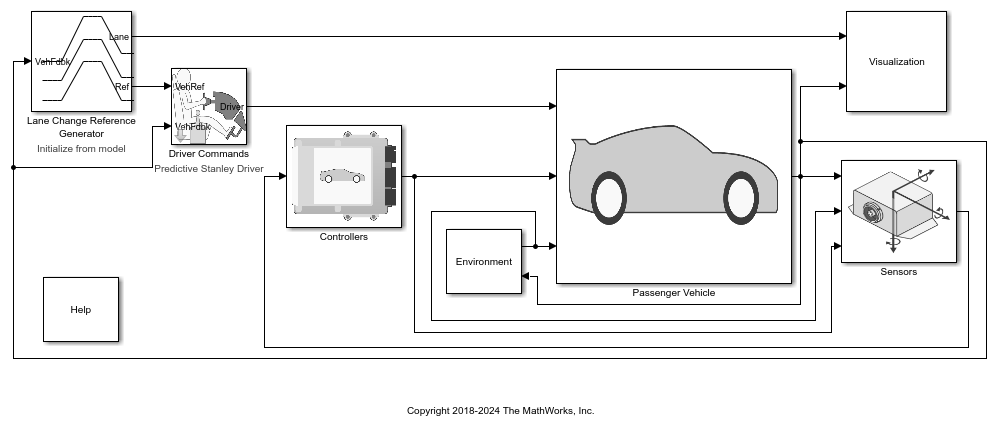Reference Generator
Generate maneuver reference signals
Description
The Reference Generator block sets the parameters that configure the maneuver and 3D simulation environment. By default, the block is set for the constant radius maneuver with the 3D simulation engine environment disabled.
Model
Use the Maneuver parameter to specify the type of maneuver. After you select the maneuver, use the parameters to specify the maneuver settings. By default:
Use maneuver-specific driver, initial position, and scene — Set to
onManeuver start time — Set to 3s
Longitudinal velocity reference — Set to 30s
Longitudinal entrance velocity setpoint units — Set to mph
Maneuver Setting | Implementation |
|---|---|
|
|
| Slowly Increasing Steering Maneuver
|
|
|
| In the test, the vehicle:
|
|
|
| In the test, the vehicle:
|
3D Engine
The 3D engine implements the 3D simulation environment. Vehicle Dynamics Blockset™ integrates the 3D simulation environment with Simulink® so that you can query the world around the vehicle for virtually testing perception, control, and planning algorithms. For 3D engine requirements, see Unreal Engine Simulation Environment Requirements and Limitations. To enable the 3D engine, on the 3D Engine tab, select Enabled.
To position the vehicle in the scene:
Select the position initialization method:
Recommended for scene — Set the initial vehicle position to values recommended for the scene
User-specified — Set your own initial vehicle position
Click Update the model workspaces with the initial values to overwrite the initial vehicle position in the model workspaces with the applied values.
Examples
Ports
Input
Output
Parameters
Version History
Introduced in R2019a
